Discover CFO THOUGHT LEADER
CFO THOUGHT LEADER

CFO THOUGHT LEADER
Author: The Future of Finance is Listening
Subscribed: 1,342Played: 39,795Subscribe
Share
© Middle Market Media LLC, 2019
Description
CFO THOUGHT LEADER is a podcast featuring firsthand accounts of finance leaders who are driving change within their organizations.
We share the career journey of our spotlighted CFO guest: What do they struggle with? How do they persevere? What makes them successful CFOs? CFO THOUGHT LEADER is all about inspiring finance professionals to take a leadership leap. We know that by hearing about the successes — (and yes, also the failures) — of others, today’s CFOs can more confidently chart their own leadership paths across the enterprise and take inspired action.
We share the career journey of our spotlighted CFO guest: What do they struggle with? How do they persevere? What makes them successful CFOs? CFO THOUGHT LEADER is all about inspiring finance professionals to take a leadership leap. We know that by hearing about the successes — (and yes, also the failures) — of others, today’s CFOs can more confidently chart their own leadership paths across the enterprise and take inspired action.
1133 Episodes
Reverse
At 19, working part-time in a bank branch while attending college, Ed Hagan made a simple recommendation: expand the branch. The idea was taken seriously enough that he was transferred to the bank holding company’s finance and accounting department, where he suddenly found himself helping with acquisitions, preparing board materials, and contributing to an IPO. The exposure was far greater than he expected at that age, Hagan tells us, and it sparked a curiosity that would shape his entire career.That early experience with real-world complexity led him to KPMG—then Pete Marwick—because the firm audited the bank. There, he spent roughly 20 years, including a decade as partner, learning “every day” and taking on global finance transformation work. When the consulting arm later separated into BearingPoint, Hagan continued building capabilities, eventually moving to London to grow a financial services practice from just a few people to a couple hundred.After 21 years in consulting, he felt ready for a different kind of problem-solving. He joined a private-equity and family-office environment, then built a fractional CFO and outsourcing practice that connected him with growth-stage founders. One of those clients—Satisfi Labs—would draw him back into the intersection of finance and technology.Satisfi Labs, Hagan tells us, is an agent platform designed for live experiences like sports, entertainment, and tourism. The company blends proprietary technology with LLMs such as OpenAI and Gemini, packaging them into solutions that make “AI hireable.” Today, the platform supports about two-thirds of North American professional sports teams and continues expanding across venues, theme parks, museums, and tour operators.
At first, we wondered why Zane Rowe was once again leading us back to Continental Airlines. With notable CFO tenures at VMware and EMC—chapters rich with transformation—surely there were fresh stories to surface.But as Rowe began tracing the logic behind flight profitability, route modeling, and data-rich decision making, the relevance snapped into focus. His Continental experience isn’t just a recurring anecdote; it’s the lens through which he still interprets complex systems today. That early foundation made this discussion every bit as insightful as our last—especially as he connected those lessons to Workday’s AI trajectory and the accelerating pace of strategic decision making.“I spent a lot of time in the airlines in what we called flight profitability,” Rowe tells us. At Continental, he helped build systems to understand which routes truly created value when full planes were still losing money, he tells us. That work, grounded in heavy telemetry and EMC technology, showed him how finance could move from reporting results to reshaping the route portfolio, he tells us.In his first conversation with CFO Thought Leader, Rowe walked through those early chapters—from revenue management at a post-bankruptcy airline to a bold sales pivot at Apple and multiple CFO roles in technology, he tells us. In this second interview, he returns to the same storyline but takes it one step further, drawing a direct line from that profitability model to today’s AI-driven world, he tells us.Now, as Workday’s CFO, he describes AI as an equalizer that lets small teams run multiple forecasting models and ingest far more variables in cash projections than before, he tells us. He points to “Everyday AI,” a company-wide initiative, and a cross-functional AI leadership group that pushes common tools, responsible use, and regular check-ins on what is changing in the work itself, he tells us.Rowe’s finance strategic moment this year is “recognizing the importance of investing more into AI”—organically and inorganically—because peers are not standing still and customers want those capabilities, he tells us. With a total addressable market “in the hundreds of billions of dollars” and revenue “much less than that,” he frames leadership now as deciding where to lean in hardest, he tells us.
In her second week as CFO, Cristina Kim sat with Octaura’s leadership team reviewing a three-year strategy and ambitious 2026 targets, she tells us. As the numbers appeared on the screen, her instinct was to do what she had done for nearly two decades: probe what might go wrong, stress-test assumptions, and look for what could break, she tells us. Mid-meeting, she experienced what she calls an “aha moment”—realizing she was no longer outside the story but inside it, responsible for helping the team achieve those goals, she tells us.That shift caps a career built on breadth rather than a linear ladder. Cristina began in investment banking in Hong Kong before spending 17 years in JP Morgan’s strategic investments group across London and the United States, she tells us. There, she learned to sit at the center of technology innovation, translating between business needs, risk, and upside, and working closely with management teams and CFOs, she tells us. Over time, investing in Octaura and partnering with its leaders made her want to move from evaluating companies to helping build one, she tells us.Today at Octaura—an electronic trading platform and data company focused on loans and CLOs, she tells us—Cristina is applying that investor muscle in new ways. She is building frameworks for resource allocation, pushing for more granular, week-to-week metrics, and exploring how AI-enabled forecasting and internal data tools can sharpen decisions, she tells us. The discipline remains, but now it is in service of writing the story from within, she tells us.
The morning after Airbase’s sale closed, Aneal Vallurupalli woke up to a very different org chart. Before the deal, roughly a third to almost half of the company reported to him, including onboarding, professional services, account management, customer success, and financial services revenue, he tells us. The day after, those teams rolled into the acquirer and “I have my EA reporting to me. And that was it,” he tells us. It left him thinking, “wait a minute… I’m not making any decisions anymore,” he tells us.That jolt became a pivot point. Rather than chase another title, he went looking for roles where finance could architect the whole engine—customer journey included. It’s the same instinct that once led him to peel back Airbase’s retention problem: starting with GRR by segment, then listening to Gong calls and mapping every step from contract signature to renewal, he tells us. Retention, he concluded, is almost never a single-issue story.Today, four weeks into his CFO role at Drata, it already feels like “the third quarter operating” there, he tells us. He talks about “ruthless prioritization” as a muscle first trained in high-level tennis and investment banking, where time, not money, was the real constraint.Now he wants finance to be the company’s best “so what” team—not just reporting variances, but offering an informed view on what to do next. Even with AI, he is wary of “tool proliferation” and scattered agents, arguing that every business must choose deliberately what sits centrally on its data and what remains at the edge.
Stuart Leung had occupied the CFO office at Flexport for only a few months when he realized the supply chain management company’s growing margin pressures stemmed not from a single root cause but from many. From pricing misalignment to invoice errors, Leung had compiled a lengthy list of snags. Along the way, he began empowering the people closest to each issue to drive the necessary improvements. By implementing more than 15 “big rock” initiatives—tracked through monthly reviews—Flexport rapidly identified, tested, and refined solutions. This cross-functional, data-centric effort not only began restoring margins but also created a replicable model of continuous improvement.That turnaround effort, Leung tells us, echoed lessons he learned earlier in his career. As a young analyst at an investment bank, he quickly discovered how fundamental analysis and modeling could uncover hidden risks. Later, private equity taught him the vital link between operational decisions and financial outcomes—a perspective he solidified while leading finance and supply chain for a small consumer brand. When he encountered Flexport as a paying customer, its tech platform simplified his logistics challenges in such a way that he became a believer in its end-to-end visibility vision.
In this special retrospective episode, we revisit three standout conversations from our archives to explore how automotive CFOs have long shaped strategy inside some of the industry’s most complex business models. From auctions to dealerships to early-stage EV manufacturing, these finance leaders reveal how they navigated scale, technology shifts, and operational risk. KAR Auction Services CFO Eric Loughmiller discusses turning massive transaction data into intelligence. Warren Henry Automotive CFO Erik Day explains the realities of margin compression and liquidity pressure. And former Electra Meccanica CFO Bal Bhullar shares how finance guides a young manufacturer from prototypes to production. Together, their insights form a timeless lesson in CFO leadership at high speed.
The email with the term sheet arrived first, then the bottle of champagne from the CEO, Jayme Brooks tells us. The lender had agreed to a nontraditional structure that allowed Capstone to borrow against intangible assets, creating a lifeline at a moment when revenue had dropped about 40% and market cap had fallen from roughly 400 million to 25 million, she tells us. Cost reductions, including a 25% reduction in force and ultimately a 50% cut in the cost structure, followed, she tells us. But the bridge financing meant the company could still fund payroll, buy supplies, and keep shipping microturbines.That moment caps years of learning “in the room.” Brooks began in engineering before shifting into accounting and public practice, she tells us. Controller roles in aerospace and a UK-owned division exposed her to debt, private equity, and board dynamics. She later accepted what looked like a step back—a director of financial reporting role at an unprofitable public company—because she wanted capital-markets experience and trusted a former CFO mentor, she tells us.Along the way, an MBA and countless investor calls broadened her view beyond “head down” execution. In the restructuring, she focused on explaining the “why” to suppliers, employees, and investors, securing payment plans and shared sacrifice so the business could survive, she tells us. Today, at Limbach, she continues to leverage external experts, integrate acquisitions, refine owner-direct metrics, and lead with an empathetic, trust-building style inspired in part by Leading with the Heart, she tells us.
Jack Welch’s binder hit the floor before Michael Bourque had time to react. At just 23, he sat in a Honeywell acquisition review meeting as the “keeper of the numbers,” rifling through a binder he knew didn’t contain the EPS detail Welch demanded. When the answer didn’t come, Welch “swept his binder off the table, threw it across the room, and got up and left,” Bourque tells us. The moment stayed with him—not only the need to anticipate every question, but the feeling of “how I was treated,” a lesson he carried forward.That early scene captures the intensity of Bourque’s 15 years at GE, where he rotated every four months on the corporate audit staff, learned to understand a business model quickly, and moved across countries from Mexico to Italy to Canada. He tells us those experiences became “a massive accelerator” but also showed him what he did not want: senior lives “lived 90 days at a time.”Leaving GE led him into Ocwen, where regulatory pressure mounted immediately. Advisers warned him to “run for the hills,” yet he stayed, tracking cash daily and absorbing public blows from the New York DFS. The experience, he tells us, taught him “how to navigate a crisis and try to keep your cool.”At LendingHome (later Kiavi), he applied that calm to redesign the business around two customer cohorts—first-timers and professionals doing “eight or more” flips a year—and anchored decisions in unit economics. That discipline would shape his leadership at Convera, where he now steers a global payments network and pushes teams to adopt AI tools that “help them… get clarity on that next operational step.”
In this episode of Planning Aces, we spotlight FP&A insights from three CFOs leading innovation with discipline: Chris Sands (InvoiceCloud), Steve Sutter (Celigo), and Niels Boon (Cint). Each shares how finance is shaping AI, go-to-market models, and data-driven transformation without losing rigor. From building an “AI Ops” function and embedding finance in sales strategy, to piloting AI tools in small, staged experiments, these leaders treat innovation as a managed process. Our resident thought leader joins to connect the dots, emphasizing structure, clear metrics, and portfolio thinking as the new essentials of FP&A.We’re excited to welcome author and former CFO Glenn Hopper into the co-host seat. Glenn joins us as our resident thought leader, bringing a deep well of experience at the intersection of finance, technology, and AI. We’re thrilled to have his voice and perspective guiding this next chapter of Planning Aces.Chris Sands leans into organizational design, reallocating talent into a formal AI Ops team and emphasizing change champions.Steve Sutter focuses on commercial mechanics, tying FP&A to sales economics, talent mix, and scale-up guardrails.Niels Boon emphasizes risk-staged innovation, using small pilots for operational wins while ring-fencing bold synthetic-data bets as long-horizon R&D.
When Troy Anderson accepted the CFO seat at Kelly Services in 2024, he stepped into an organization that, as he tells us, “had done a number of acquisitions … and really invested in the business.” The legacy staffing firm had spent nearly $1 billion to expand its reach but had yet to fully integrate those pieces. Anderson’s mission: align a global operation that had grown faster than its systems.It was a familiar challenge. Across three decades and multiple industries, Anderson has made a career of steering companies through transformation. At Universal Technical Institute, he led a finance overhaul that supported a business which, he tells us, “more than doubled the company.” Before that, as a senior finance leader at Xerox and its services spinoff Conduent, he helped raise $2 billion in debt and “build out the public company infrastructure … from scratch.” That experience, preceded by an investor-relations rotation where he worked directly with Xerox CEO Ursula Burns and CFO Kathy Mikells, became “the game changer” that propelled him toward the CFO office.Now, at Kelly, Anderson is guiding a transformation “on both sides of the ledger … organizational and technology.” He’s integrating recent acquisitions, modernizing finance systems, and preparing the company for the cyclical realities of a staffing industry he describes as “in decline for about two years now.”His approach reflects a pattern consistent throughout his career: when others see complexity, Anderson sees structure waiting to be built—and an opportunity to apply every lesson learned from the transformations that came before.
When David Lee joined PG&E in San Francisco, the company was collapsing under the weight of California’s first energy crisis. “These utility veterans kind of got us into this,” the new CFO told him, handing him an unusual assignment: act as an “anti-CFO.” Lee spent his days testing every forecast and financing plan, proposing contrarian options like a preferred-equity line from KKR. The exercise, he tells us, forced him to “think independently” and learn how to guide a public company in deep trouble.That moment crystallized a pattern in Lee’s career—a willingness to enter complex situations and rethink accepted wisdom. From his start at Leo Burnett Company, where he learned to “walk in the shoes of the consumer,” to his nine-year transformation tour at Del Monte and later Best Buy’s celebrated “Renew Blue” turnaround, he has sought environments that reward original thought over routine expertise.Today, as global COO and CFO of Webtoon, Lee applies the same mindset to a different kind of transformation—the business of storytelling. He tells us the platform connects 24 million creators to 156 million readers each month, growing its English-language audience 19 percent year over year. Yet he draws a bright line around technology’s role: “Human storytellers are the best storytellers.” AI, in his view, should fight piracy and improve discovery, not replace creativity.Across every chapter, from crisis utilities to digital comics, Lee’s philosophy remains constant—progress begins when finance leaders question assumptions and listen long enough to see possibilities others overlook.
When Erik Wissig recalls his early years as a founder, one moment still stands out. The team had met its growth goals and earned their bonuses—but the company’s cash flow hadn’t caught up. “You need the cash to make those payments,” he tells us. That hard-won lesson reshaped how Wissig approached finance from that day forward: plan ahead, balance ambition with liquidity, and bring the wider leadership team into that awareness.Before that turning point, Wissig had spent a decade in investment banking, advising hundreds of middle-market companies on transactions. Eventually, the advisor wanted to build. In 2013, he co-founded Hixme to give employers a new way to fund individual health insurance—an idea born from the Affordable Care Act’s reshaping of the market. When regulatory realities slowed progress, Wissig stayed the course. Hixme’s platform and team were acquired by SureCo in 2020, where he now serves as CFO and COO.At SureCo, Wissig’s banking discipline meets an operator’s pragmatism. He focuses on two levers—raising revenue per customer and scaling efficiencies—and on hiring into his weaknesses, surrounding himself with strong CPAs. His leadership style mirrors his philosophy on failure: persistence is progress. “If the game is still being played, then you haven’t failed,” he tells us.Twelve years into his pursuit of the ICHRA model, Wissig remains motivated by one conviction: lasting change in healthcare begins by putting individuals—not institutions—at the center of the system.
The moment that stayed with him began at a marketplace where sales dashboards showed 40% gross margin—yet finance closed the books at 20%, Boon tells us. The gap, he discovered, lived in the shadows: rebates, discounts, and “free” services that never touched operational metrics. He manually traced economics to the client level and found margins many considered healthy were thin—or nonexistent. One customer representing roughly 30% of revenue delivered 0% gross margin, Boon tells us.That scene explains his broader path. He started in London investment banking “working on deals 24/7,” then spent five years at McKinsey across Europe on corporate finance and strategy. At Zalando he founded Strategic Finance to ready the company for IPO—tightening the P&L and working capital. Hypergrowth taught him that unchecked hiring breeds overlap and data drift, so ownership and reporting must evolve with scale, Boon tells us.He gravitates to complexity. At his current company—public since 2021 and combined with a U.S. competitor bought for “about a billion USD”—systems sprawl and legacy platforms made accuracy difficult while two-thirds of revenue came from the U.S., across 130 countries with people in 14, Boon tells us. He cut legal entities from 28 to 14, moved to one ERP, and shortened the monthly close from “15 days” to “five or six days,” Boon tells us. Two efficiency programs, a 120 million refinancing, and a rights issue 60% oversubscribed rebuilt credibility.Back at the marketplace, he installed a pricing director reporting to finance, killed blanket rebates, and tied commissions to net revenue. Within 12 months, margin rose from 20% to 40%, Boon tells us—proof that disciplined economics, not dashboards, drive durable turnarounds.
In this special episode of CFO Thought Leader—the first of three produced in collaboration with The Suite, Shaun Sethna (General Counsel and GM for the L Suite) maps where CFOs and GCs misjudge contract risk and how to collaborate effectively. He spotlights “locked-in” deals that still enable termination via vague clauses or missing notice-and-cure. Start with strategy alignment, then cross-train—mini finance for lawyers, mini legal for CFOs—and empower teams to escalate wisely. He urges adopting AI to summarize agreements, surface obligations, and route risks. Looking ahead, he flags AI agents as SaaS “users,” which could upend seat-based pricing. He closes with an M&A example where mutual fluency let GC and CFO catch material misses.• Align strategy first; contracts follow business intent.• Cross-train teams to spot each other’s risks.• Adopt AI to illuminate obligations and exposure.
When Procter & Gamble asked Atsushi Kitamura to move from finance analysis into running a manufacturing plant, he didn’t hesitate. “They always give me next challenge to stretch me,” he tells us. Managing one of P&G’s large diaper plants in Japan forced him to apply finance in real-time operations—a proving ground that shaped his comfort with change and appetite for transformation.That readiness carried him from consumer goods to logistics, restaurants, and electronics before arriving at Astellas Pharma, where the stakes are now measured in science and strategy. When he joined in 2023, Astellas had just completed a $6 billion acquisition that shifted it from a net-cash to a net-debt position. Hired to “put financial disciplines and make the balance sheet stronger,” Kitamura tells us he views the moment as a “transformative timing” for the company. Loss of exclusivity on a prostate-cancer drug representing “more than 40 percent of our revenues” demands reinvention.His three-part playbook focuses on growing core brands, investing in science creation, and executing what he calls “sustainable margin transformations.” The approach has begun to pay off—“top line 19 percent, profit 40 percent,” he tells us—signaling a finance organization in renewal.Now he’s turning to technology to sustain that momentum. Describing the shift from RPA to “agentic AI,” Kitamura explains, “I just ask agent AI to do that booking.” He calls it a tipping point that will “change significantly the way how we work.”Still, he adds, leadership begins with listening. “Don’t pretend I know everything,” he tells us. For Kitamura, finance transformation starts not with machines or metrics—but with humility.
On a quiet afternoon in Punta Cana, Michael Levine sat alone on a stretch of white sand. The turquoise water and silence offered the perfect scene for rest—until he realized what was missing. “I didn’t have my phone and I didn’t have my laptop,” he tells us. “That’s what makes me happy… I love doing work from the beach.” It was there, after stepping down as Payoneer’s CFO, that Levine accepted a truth about himself: he wasn’t ready to retire.Levine had spent 11 and a half years helping Payoneer scale from about 100 employees to 3,000 and from $150 million to more than $80 billion in annual volume. He guided the company from private to public in June 2021 and from unregulated to regulated operations. When he left in 2023, he planned a pause but instead found himself drawn to a new frontier.Calls from crypto companies arrived during what he calls the “crypto winter.” Although he had once avoided digital assets entirely, he became fascinated by “decentralized finance,” “smart contracts,” and the tokenization of real-world assets. A meeting arranged by Spencer Stuart with the CEO of Fireblocks solidified his next move. “When you don’t know which horse to pick in a race,” Levine tells us, “buy the racetrack.”Fireblocks, he explains, is the infrastructure that secures digital assets for enterprises through self-custody and cyber-grade protection. For Levine, it was a chance to apply a career’s worth of scaling and governance experience to a technology poised to define the next decade of finance.
She starts with tape from the field, not the spreadsheet. Listening to enterprise sales calls, Amy Foo heard customers whose usage rose and fell with seasons. Fixed per-seat pricing “wasn’t quite hitting the mark,” she tells us, so she piloted a pooled-seat model that flexed monthly within an annual commitment—turning smaller clips into “one to five million” deals and lifting revenue “six to seven times per customer,” she tells us.That instinct—to meet the customer where they are—threads through her journey. Early at Zendesk, she was “employee number one in the region,” handling FP&A, accounting, taxes, and team-building as the business scaled, she tells us. Trust won her a dual path: SVP of Global Finance Operations (deal desk, billings, shared services) and APAC managing director, aligning teams across seven countries, she tells us. Mentors’ unvarnished feedback helped her shed imposter syndrome and lead without geographic ceilings.Today at Ignition, she reduces complexity to a few levers—ARR, payments volume, cash flow—and aligns accordingly, she tells us. She monitors top-of-funnel quality and pipeline coverage daily to steer marketing spend and sales motions, she tells us. On pricing, she watches what customers pay and repackages value by segment, she tells us. She leads with customer insight, she tells us.As for AI, she calls it “not a magic pill,” advocating first for AI built into existing vendors, then new tools where capabilities are missing, she tells us. Finance, after all, is “about narrative and conviction”—numbers that move people to act, she tells us.
When Joe Custer describes Intrado’s purpose, he begins with a story that traces back almost half a century. The company, he tells us, was born inside the Boulder County Sheriff’s Department when someone asked whether there might be a better way to connect a caller in distress with a first responder. “Turns out they were on to something,” he adds. Today that idea has scaled into a mission-critical network touching roughly 90 percent of all 911 requests for assistance.Custer explains that Intrado “has to operate like a utility … we cannot fail.” Reliability is not a metric to be met but a promise to the public, one he refers to as “public safety grade.” Behind that standard lies a web of acquisitions—eight to ten over time—that were never fully integrated. That challenge, he says, became opportunity when Stonepeak Infrastructure Partners carved Intrado out of West Corporation and began investing to harden its network and modernize its operations.As both CFO and SVP of Operations, Custer leads a transformation aimed at restoring Intrado’s position as the thought leader in emergency communications. The work goes beyond financial engineering; it’s about aligning systems, culture, and purpose around a single mission: saving lives. “We want to be the most trusted authority in public safety,” Custer tells us, describing a workforce “deeply committed to the cause.” In his view, reliability, investment, and mission are inseparable—the essential framework for Intrado’s next 50 years.
On his first day in investment banking, Clayton Kossl was “thrown right into the cauldron.” With few senior professionals in the small aerospace and defense group, junior bankers like him were expected to face company owners directly. “You had to understand the businesses inside and out,” he tells us. The experience forced him to blend analytical depth with the interpersonal agility needed to earn trust in every room.That mix of skills—numbers and nuance—became a through line in Kossl’s career. At ZocDoc, he joined a Strategic Finance team that partnered closely with the CEO and CFO, taking ownership of decisions that rippled across the fast-growing health-tech firm. The role taught him that financial modeling and relationship-building could coexist—and that influence often came from understanding how leaders think, not just how spreadsheets add up.Later, when Kossl joined Paintzen as one of roughly a dozen employees, those lessons proved vital. He rebuilt systems from scratch, partnered daily with the CEO and COO, and touched nearly every function of the business. “Someone had to do it,” he recalls. His ability to translate operational chaos into financial clarity helped guide Paintzen through its expansion and eventual sale to PPG Industries.Across these chapters, Kossl’s story reveals a consistent pattern: using strategy to tell better stories. Whether advising founders or steering finance in ad-tech today, he views storytelling not as spin, but as structure—the way finance can make complexity understandable and transformation achievable.
“InvoiceCloud is not just payments,” Chris Sands tells us. Sitting inside the company’s finance organization, he sees a platform built to change habits—helping businesses shift customers from paper invoices and mailed checks to fully digital transactions. The success metric, he adds, is simple: “Do more of their customers stop receiving paper invoices, stop mailing in checks, and do both of those things digitally?”That clear yardstick reflects how Sands thinks about growth. He describes a foundation rooted in existing customers even as the broader economy accelerates toward digital payment adoption. Utilities and insurers remain core markets, yet new verticals, such as consumer finance, beckon. Each expansion, he notes, must rest on data that confirms user behavior is truly changing.Inside finance, Sands has built what he calls a Strategic Finance function to mirror that discipline. The group handles special projects and, increasingly, AI initiatives—efforts he says once fell entirely within FP&A. Now they stand on their own “leg of the stool,” amplifying how finance supports innovation.That mindset extends beyond the department. Sands helped stand up an AI Ops team—an internal SWAT group that guides employees exploring AI tools. Instead of experimenting in isolation, staff can bring use cases to the team for help. For Sands, finance’s role is to stay analytical amid the excitement: “We can add more value … by helping the rest of the org with [AI] and using our finance skill set to understand where the best opportunities to create business value exist.”





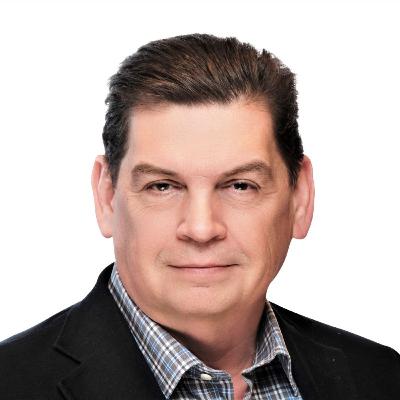
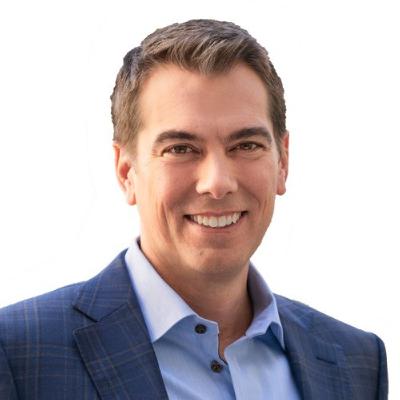
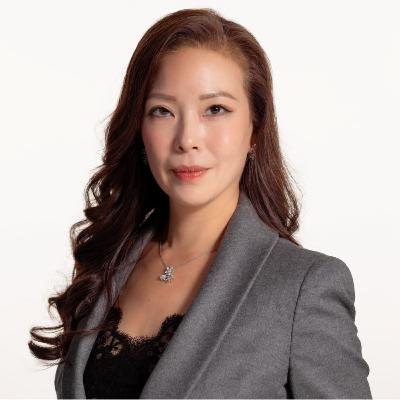
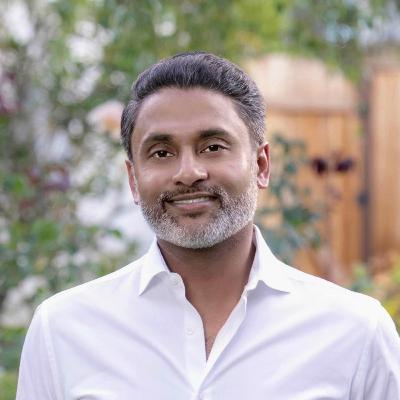
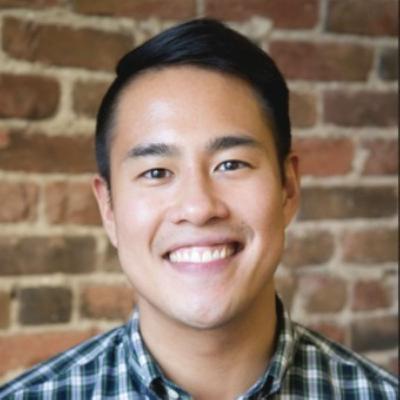

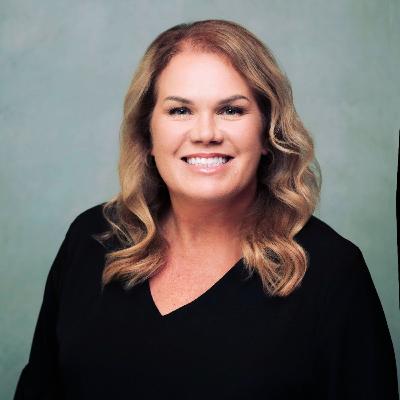
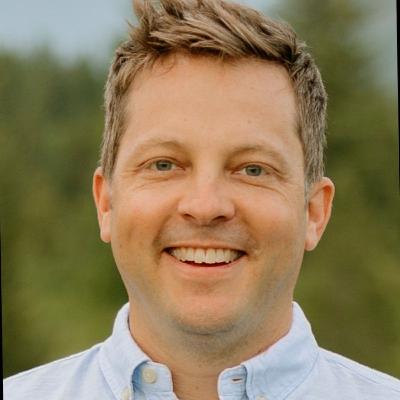
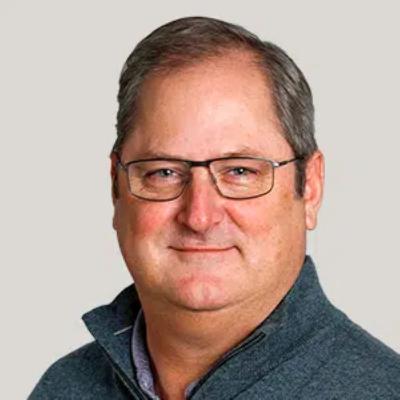
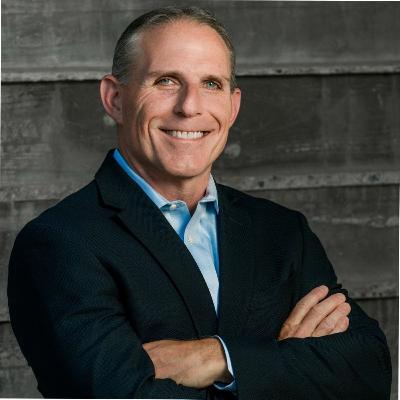
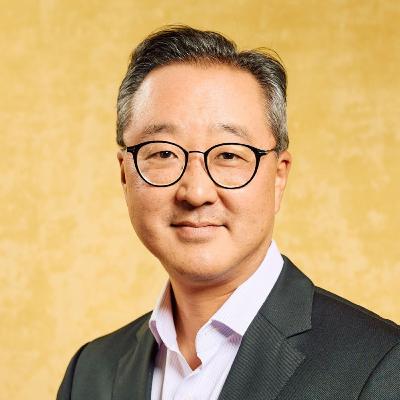
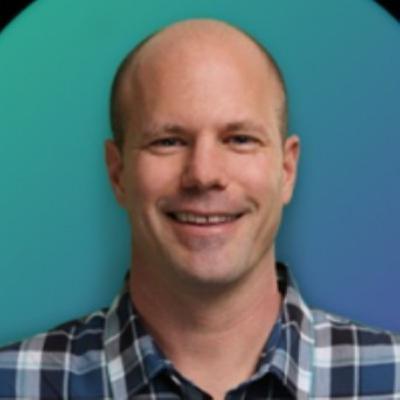

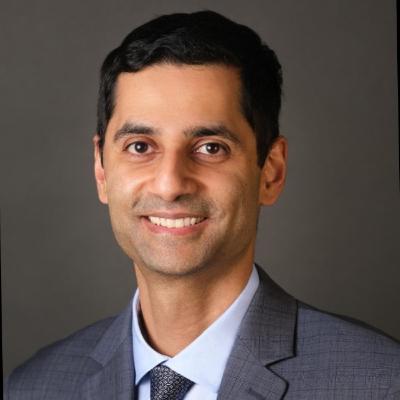
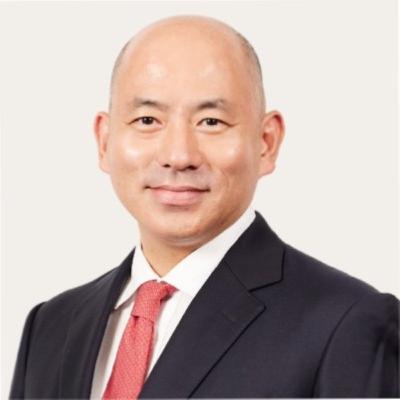
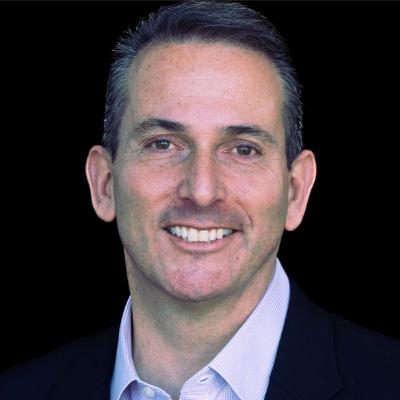


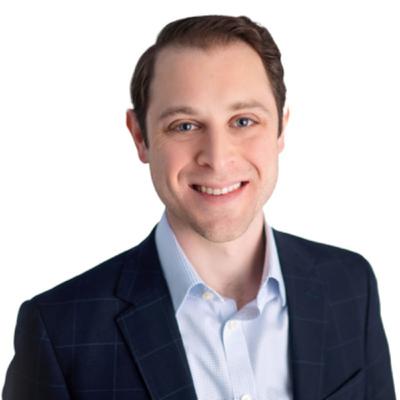
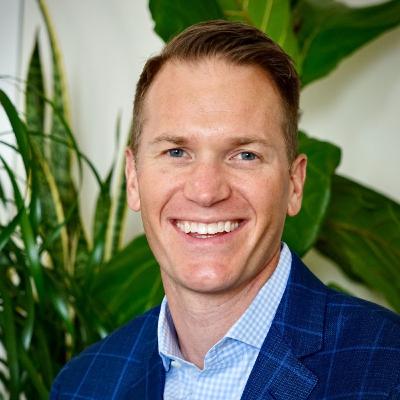



enjoyed this well
This is one of the best podcasts I've listened to in awhile. Please offer additional ones from Rick Young - he's great!